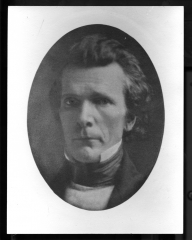Maginnis. Seven Trustees nominated Dr. William R. Williams of New York City to succeed Maginnis, and two abstained. In effect, this was an attempt to dismiss him. In taking this action it is possible that some of the Trustees felt that by dismissing the fiery Maginnis they might restore the harmony which had existed between the church and the University prior to the Knapp case in 1845. To cope with the extraordinary situation special meetings of the two boards were called for the first of September. Elisha Tucker, a member of both, expressed the reaction of several of his associates when he wrote in “astonishment to Dr. Kendrick:
Such a rejection of Bra Maginnis if persisted in, will dispose of friends that the institution cannot spare. Is it in the estimation of some of the board so trifling a matter to shut the door in the face of a professor that no intimation is necessary to the members of that board generally that important business is to be transacted [?]…before being rejected he has a right to know & the members of the board have a right to expect that they” will have some intimation, that the question will come up.*
The meetings, which lasted two days, were stormy. Dr. Williams, a University Trustee who supported Maginnis, was especially indignant and loosed his wrath on the Education Society Trustees. Before the Boards adjourned, however, they jointly adopted resolutions “expressing their undiminished confidence in the ability & competence & diligence of Prof. Maginnis, and their solicitude to retain for this Institution the benefit of his experience, influence, and high endow-
*Eisha Tucker, New York, N.Y. to Nathaniel Kendrick, Aug. 24, 1847.





